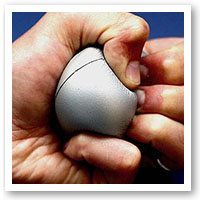Stress and your body, part 2.
 Now, after reading Part 1 in last months newsletter, you may have a better understanding of how readily our body reacts and changes in response to stress. These changes will often occur without us having any awareness of them, but there are many other changes that occur that that we can feel. Many patients present to me with various aches and pains, that very often have an underlying cause of stress. When we are dealing with stress our body reacts in certain predictable ways. There are 3 muscles that will always tighten in response to stress. They are your diaphragm, your upper Trapezius and your Suboccipital muscles.
Now, after reading Part 1 in last months newsletter, you may have a better understanding of how readily our body reacts and changes in response to stress. These changes will often occur without us having any awareness of them, but there are many other changes that occur that that we can feel. Many patients present to me with various aches and pains, that very often have an underlying cause of stress. When we are dealing with stress our body reacts in certain predictable ways. There are 3 muscles that will always tighten in response to stress. They are your diaphragm, your upper Trapezius and your Suboccipital muscles.
Your diaphragm is a sheet of muscle that sits like a dome and divides your internal body in half. It sits below your lungs and heart and above the rest of your organs, and is important in breathing as it moves down to help your lungs draw breath in and up to help push air out of your lungs. When it is tight it is not able to move down and this results in feeling short of breath. As it is attached to structures on the inside around the level of the lower ribs, any tightening of the diaphragm can pull on these structures and often create a twist in that area. This can result in pain in the back, along the spine, around the ribs, and sometimes even pain on breathing.
The upper Trapezius muscle sits across the top of your shoulders and up into the lower neck, as it tightens it will pull the shoulders up and pulls the neck down into the shoulders. This affects your posture and will create discomfort in your shoulders, between your shoulder blades and also your neck. It can also cause a pinching of the nerves in your neck resulting in numbness or a tingling or pins and needles sensation in your hands or fingers.
The Suboccipital muscles are short muscles that join the back of your skull to the upper neck. Any tightness in these muscles will cause your head to tilt back. They can give you pain in the upper neck and in the back of the skull. Tightness in these muscles together with the Trapezius muscles creates poor posture and stiffness running from the skull to your shoulder blades, resulting in neck and shoulder pain as well as headaches. Sustained tightness and resulting poor posture in this area can often result in achiness in your upper arm.
Another common reaction to stress is clenching or grinding your teeth. Apart from this being damaging to your teeth, it causes very tight jaw muscles. This in itself can give you pain around the jaw which can feel like a headache. These tight muscles will also affect the upper neck and temples due to where they attach, and cause neck pain and stiffness and headaches.
Stress is a part of every persons life, and it can be positive, such as it being a motivator, but it can also cause problems. Just like everything in life there needs to be balance for there to be health and wellness. Stress can be balanced by exercise and relaxation, so it is important to find forms of exercise and relaxation that work for you, and incorporate that into your daily life.
